How to Extract CBD: CBD Extraction Methods Explained
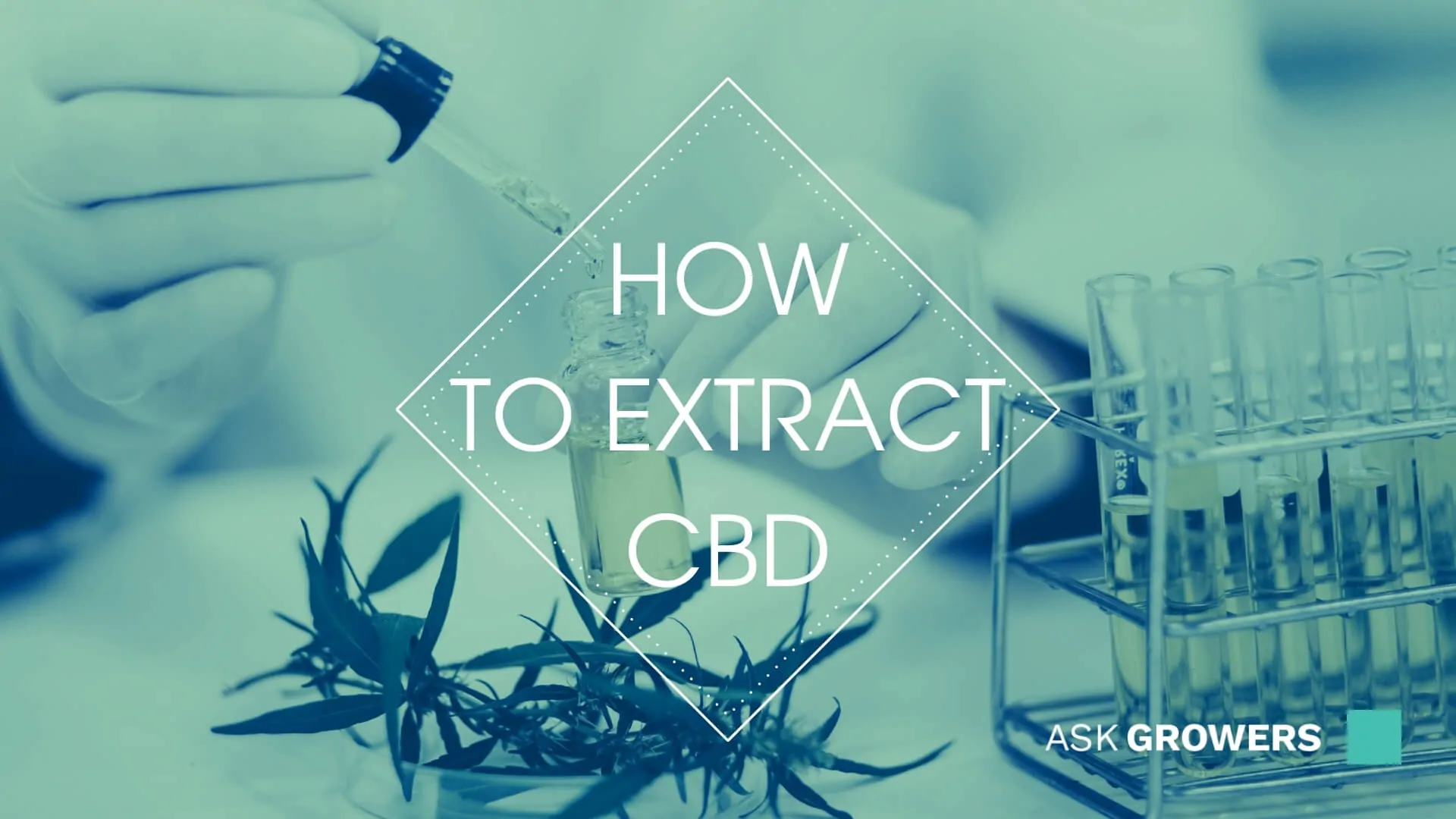
CBD oil has been proved to reduce inflammation and offer pain relief. There are numerous options on the market, but making your own cannabidiol oil is not a difficult process and you have complete control over its quality and purity. It is important to use high-quality hemp plants for any procedure in order to benefit from high CBD content. The next sections cover different methods of extracting CBD and their advantages and disadvantages.
Choosing the Right Strain For Home Extraction
Regardless of the extraction method you choose, you need to carefully select the strain you will use to extract CBD. When you buy CBD oil from any shop, the label states clearly the content of THC, which is important because it has psychoactive effects. When creating your own CBD oil at home, it is impossible to know how much THC the oil contains.
There are strains with high content of CBD, such as Thunderstruck, for instance, starting from 10-12%. However, THC is also a naturally occurring compound in the hemp plant in different proportions. You should choose a strain with a very low THC content but, even in this case, some traces will still be present in your oil. The main concern is that THC can be easily detected through tests, leading to prosecutions such as arrest or canceled driving license. These consequences depend on the state you live in.
As a result, you cannot be certain whether oil home-made CBD oil exceeds the THC limit or not, so it is best to check your state’s laws and regulations and avoid any activities that endanger you after using the CBD oil.
Vegetable or Cooking Oil CBD Extraction
CBD oil or hemp oil can be easily made at home using high-quality hemp flowers and an oil of your choice. The common options for the carrier are coconut oil or MCT oil and they are often used for different herbal infusions. However, any vegetable or cooking oil may be used – including quality extra virgin olive oil which has the added benefit of the high content of antioxidants. Other options include avocado oil, or even butter and ghee.
Read Also: Cannabutter Guide: Recipe, Effects, Dosage
The compounds in the plant must be activated through heating, which is the main reason smoking is one of the traditional consumption methods. One of the most inexpensive methods is to bake the hemp flowers in an oven or use a slow cooker for a few hours. However, they are also imprecise and some of the CBD might be lost.
For better quality, a precision cooker is ideal because it maintains a consistent temperature throughout the entire process. It is also known as a decarboxylator but it can be an expensive investment. It is a better method for anyone who takes CBD regularly or wants to make high-quality CBD oil using vegetable or cooking oil.
To make CBD oil, preheat the oven at 280°F and bake the flowers for about one hour. After this, place them into a pan, add the vegetable oil of your choice, and leave the mixture on the lowest heat setting for approximately two more hours.
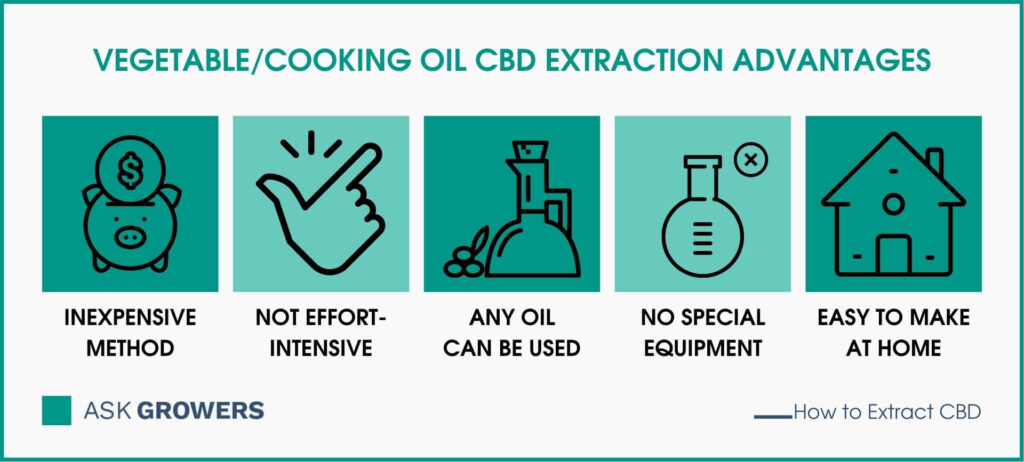
If you have a slow cooker, you can use it for your CBD oil. Chop the flowers, add them to the slow cooker, and cover them with oil. Set the device on the low setting; in approximately three hours, it should reach the maximum temperature of 175°F. Stir the oil and the flowers after this period, and every few hours afterward. However, if possible, stir the contents without opening the lid to preserve as many terpenes and other compounds as possible.
Leave the oil to cook for 24 hours and cool it by turning the slow cooker off, without removing the lid. Once it reaches room temperature, use a cheesecloth to filter the oil and transfer it into a glass jar. This can be used to make a tincture, for cooking, or as an extract.
Pros
- Inexpensive method using only cooking oil and hemp flowers
- It is not effort-intensive
- Any vegetable or cooking oil can be used
- No special equipment required
- Easy to do at home and no experience required
Cons
- This method is less precise
- The final product may be quite weak
Basic Solvent CBD Extraction
CBD can be extracted using one of the usual solvents used for this practice, such as ethanol, butane, or hexane. It is mandatory to ensure that these are completely removed after processing, so it can be quite risky for inexperienced people. These solvents are highly flammable, so there is a high risk of causing injuries. In case the temperature is too high, essential compounds, such as terpenes, might be destroyed, lowering the efficiency of the CBD extract.
Ethanol (alcohol) is a common choice but, due to its higher price, some prefer to use cheaper solvents, such as butane or hexane. However, the final product enjoys a higher quality when ethanol is used.
As for the previous method, the plant must be decarboxylated before (heated up) in order to activate the compounds. Generally, it can be left in the oven at 175-190°F until the flowers crumble.
Once the flowers are dry and reach room temperature, place them in a storage container and freeze them along with ethanol until the temperature is approximately 1°F.
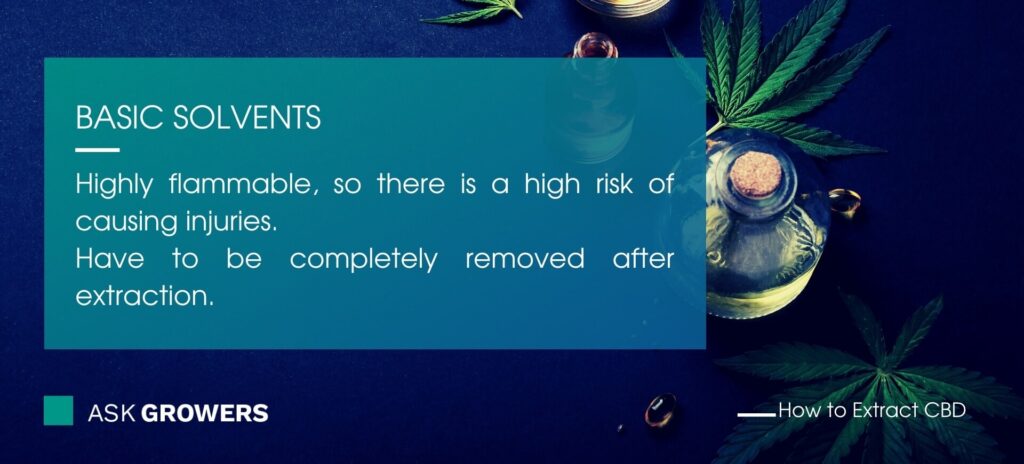
To begin the process, hemp trimmings and flowers are placed into a container and soaked into the solvent. is recommended to use about 0.6 to 1 gallon of ethanol per pound of flowers to ensure an efficiency rate of more than 90%. The flowers should be covered in about 1 inch of alcohol. Place the jar back into the freezer after mixing the contents gently. The jar should be left in the freezer for 3 minutes overall and mixed twice throughout this period.
Pour the mixture through a cheesecloth to separate the flowers from the alcohol. You may use a coffee filter or a laboratory filter to further purify the solution and speed up the evaporation process. The solution should be placed in a water bath at about 160°F until there no more bubbles. Filter the solution once again using the coffee filter and place it back in the water bath and leave it until the bubbles on the bottom are nearly entirely evaporated.
Pros
- Ethanol efficiently extracts chlorophyll, resulting in better quality but bitter CBD oil
- Takes less time than the cooking oil extraction method
- No special equipment is required
- Easy to do at home
Cons
- This is the riskiest method as the solvent must be completely eliminated from the extraction
CO₂ CBD extraction
The CO2 extraction method is the most efficient and is considerably safer than using solvents. However, it uses special equipment and extraction systems and it is not suitable for beginners.
Most companies use this method for several reasons. It results in better quality CBD extracts because it preserves most of the beneficial compounds and it usually does not have any contaminants. The equipment used for CO2 extraction is known as a closed-loop extractor, which is a machine with three chambers. The first compartment has pressurized, solid CO2, the next one contains the dried hemp plant trimmings and flowers, while the last chamber helps to separate the extract.
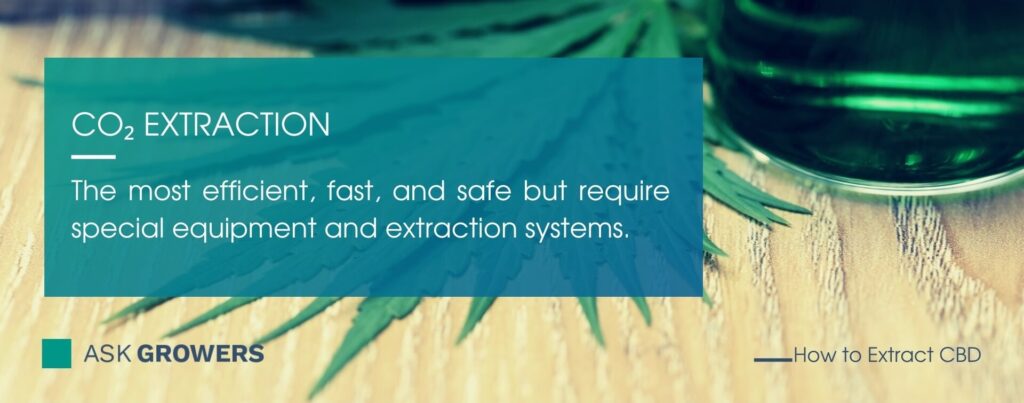
From the first compartment, CO2 is pumped into the second chamber that contains hemp flowers. The CO2 becomes “supercritical”, a term used to define a substance that is between a liquid and gas state. The CO2 goes through the plant and extracts the CBD. Then, CO2 is pumped into the last chamber where the CBD extract is formed, while CO2 rises to the top of the extract, leaving the pure full-spectrum CBD extract on the bottom.
Pros
- The most efficient extraction method
- The process is quick
- Does not leave any contaminants in the CBD extract
- The most commonly used method
- Environmentally-friendly procedure
Cons
- Equipment is very expensive
- It might also pull-out chlorophyll
Dry Ice Extraction
The dry ice or ice extraction method does not require any special machinery and, when done correctly, it can result in high-quality CBD extracts. There are different methods available, but the main steps are generally the same. The decarboxylated plant trimmings are finely chopped and mixed with dry ice or ice. After 3 minutes, thoroughly shake the contents in order to separate frozen trichomes from the chopped plant.

Use a sheet of plexiglass or a mirror. Cover the container with a hash bag, turn it upside down on the surface, and shake it again. The resin collects on the mirror or on the plexiglass sheet used by falling through the hash bag. Scrape it off from the surface to collect it.
Pros
- Easy and inexpensive
- Can result in high-quality CBD extracts
- A large amount of CBD extract can be produced
Cons
- It is quite effort-intensive
Steam Distillation
Steam distillation is a tried and true method that helps separate CBD oil from hemp plants. The raw plant matter, including stems, is placed in a glass flask. The steam is delivered into the flask and separates volatile compounds, which are then captured in a condenser tube. In the tube, the resulting vapor is cooled and condensed back into water and oil. This mixture should be further distilled to get the oil from the water. Also, this process is used to extract essential oils in the perfume industry. In the cannabis sector, it is less preferred and not frequently employed due to its inefficiency and inconsistency. Still, it is utilized by some laboratories to isolate CBD from a full-spectrum oil. Pros
- A cost-effective method
- Simple to perform
- Leaves no toxic residue
Cons
- Large amounts of hemp plants are required
- It is difficult to get an exact amount of CBD concentration
- Too hot steam can damage the extracted liquid and alter its CBD properties
How Long Does CBD Extraction Take?
The time depends on the chosen method. Typically, using cooking oil or dry ice can take longer. In the case of cooking oil, the CBD oil might be ready in about 24 hours. Ethanol extraction methods or other solvent-based techniques can be quicker, while the CO2 extraction method is quicker and more labor-intensive.
What Happens After CBD Oil Extraction?
After raw oils are extracted, they should be further refined to isolate specific compounds like CBD. This process takes 2 stages with the first one called winterization, which is followed by distillation. Although sometimes the winterization is enough.
Winterization is a common process that helps remove unwanted elements such as waxes, lipids, chlorophyll, and undesirable solvents. It results in a clean oil with 70-90% CBD which is rich in terpenes. This process is utilized when the product was extracted at high temperatures or under high pressure since these crucial methods allow extracting a lot of substances from raw plants, including multiple impurities. To get a clean final product, crude oil is mixed with 200-proof alcohol and placed in a freezer. Low temperatures and solvents like ethanol ensure that all lipids will solidify and can be separated from the extract. The frozen liquid looks cloudy and requires filtration. After that, it is run through a filter paper to remove impurities. Winterizing is not always performed, but it is necessary if the final product will be used for vaping.
Now, all solvents should be removed from the oil. It is done by using high temperatures. The process of distillation is performed, when the extract is heated. CBD oil contains various compounds which have a different boiling point. The alcohol and other remaining substances evaporate because they have a lower boiling point than that of the oil. During a short-path distillation, the CBD vapors travel through a distillation tube. They are cooled and condensed in the form of a thin film, which then drips down into a collection container. This distillate extract includes up to 90% pure CBD oil.
Which CBD Extraction Method Is the Best and Safest?
The best extraction method depends on the person’s skills and available resources. The most efficient method is CO2 extraction as there is little to no room for error when using machinery. On the other hand, this might not be available without significant investment. For beginners, it is best to avoid solvent-based techniques and use cooking oil or dry ice instead.
All in all, CBD oil is not difficult to make, especially for people who use it regularly. There are different extraction methods, each of them with different advantages and disadvantages. Regardless of the extraction method used, the quality of the final product depends on the skill level and how well the extraction was performed.

 Guides
Guides
 CBD
CBD

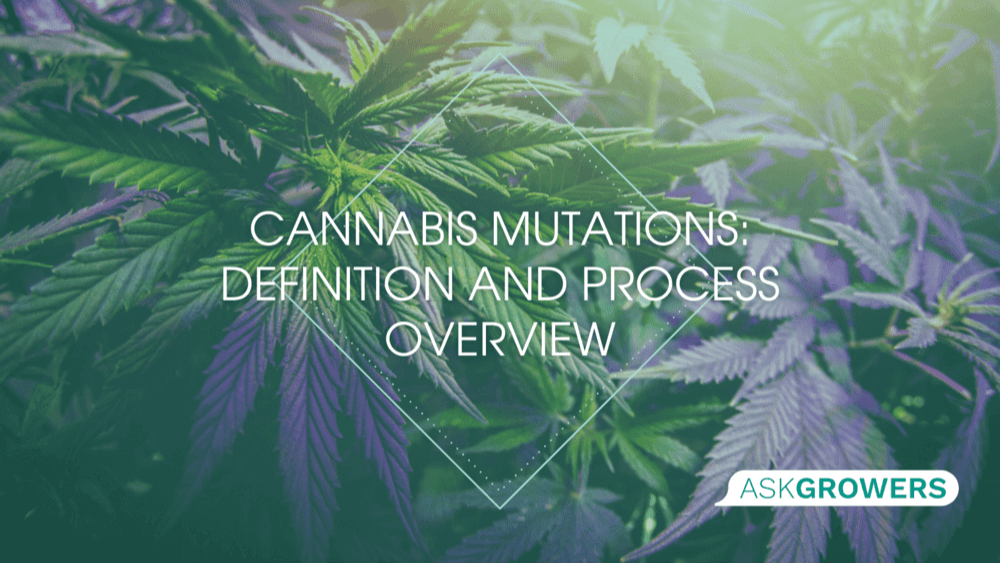
.png)
.png)
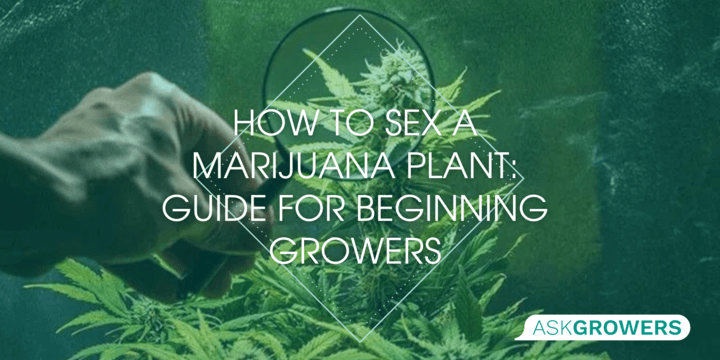
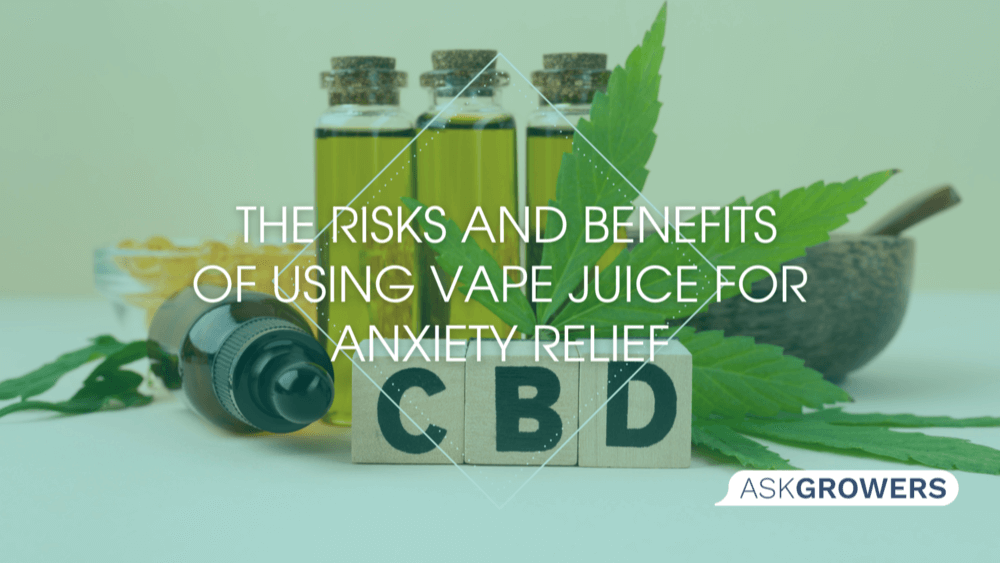

 (1).png)
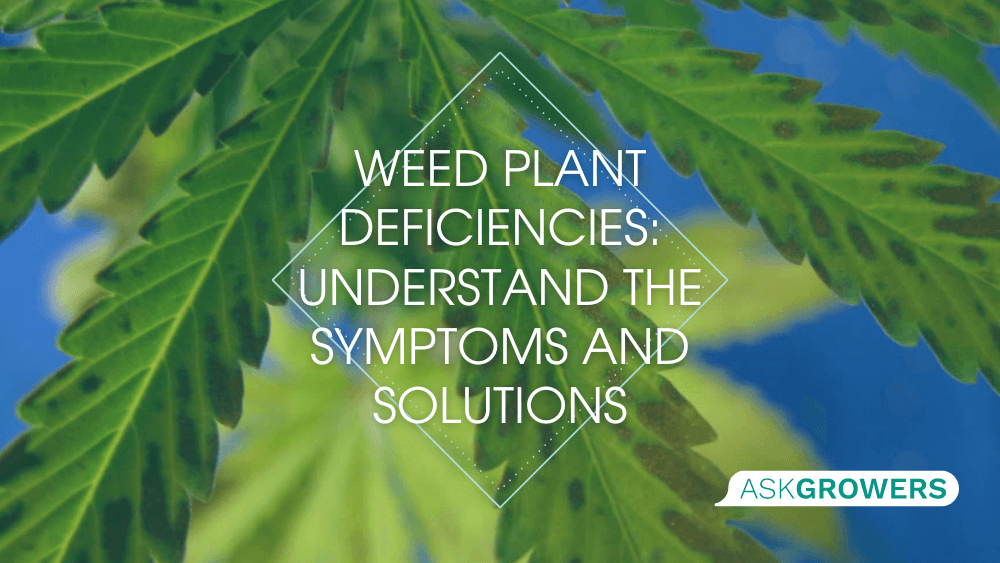
.jpg)

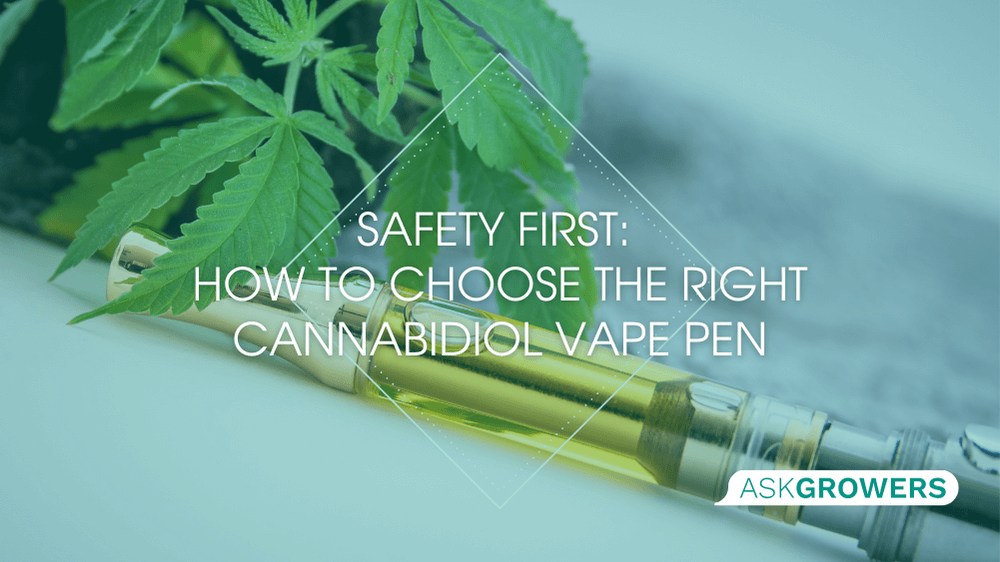
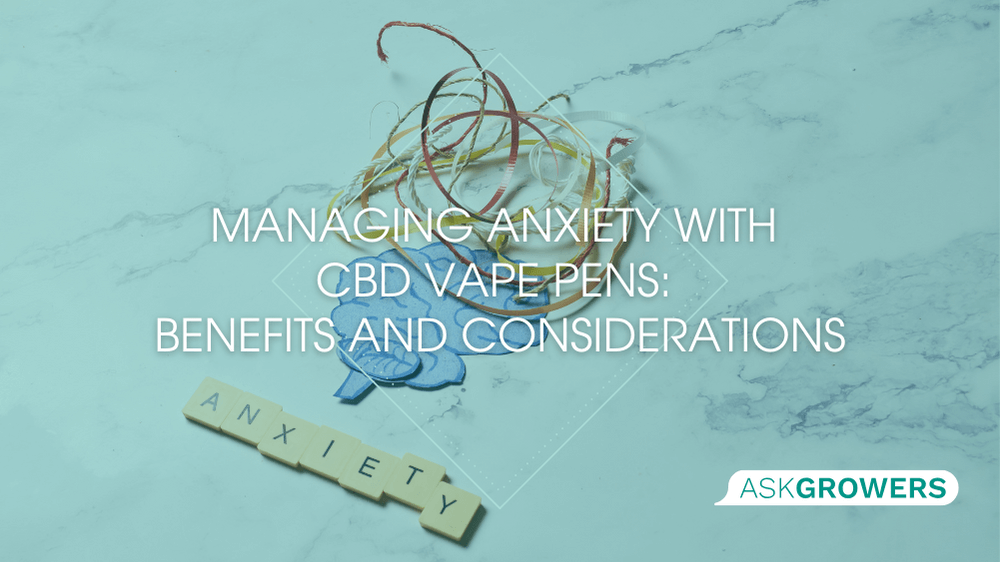
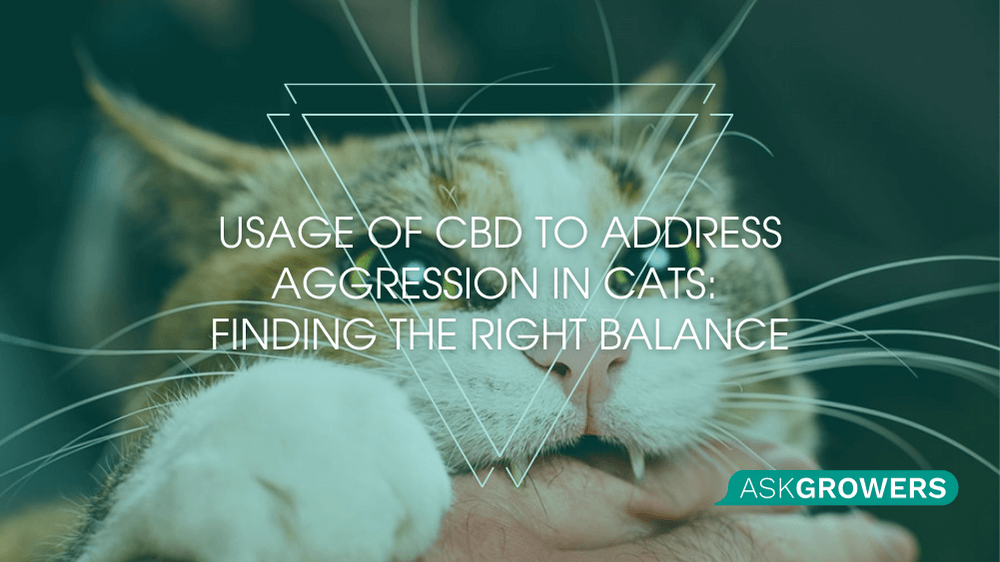
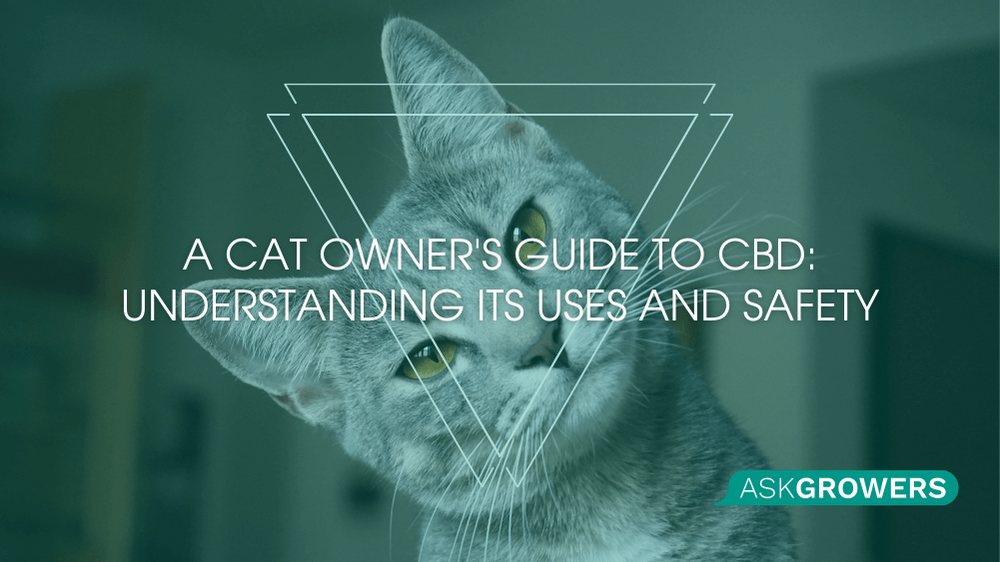
Be the first and share your opinion
Write a Review